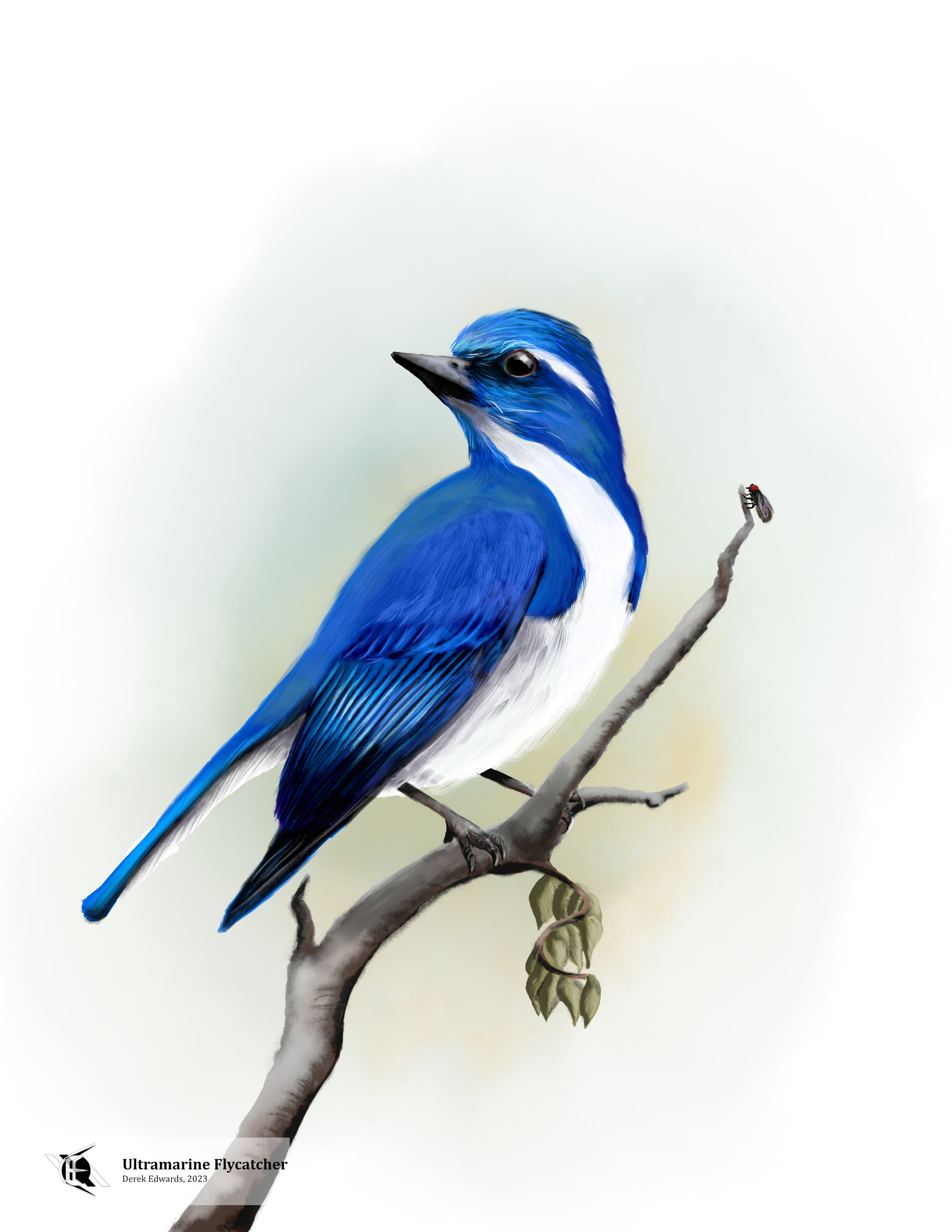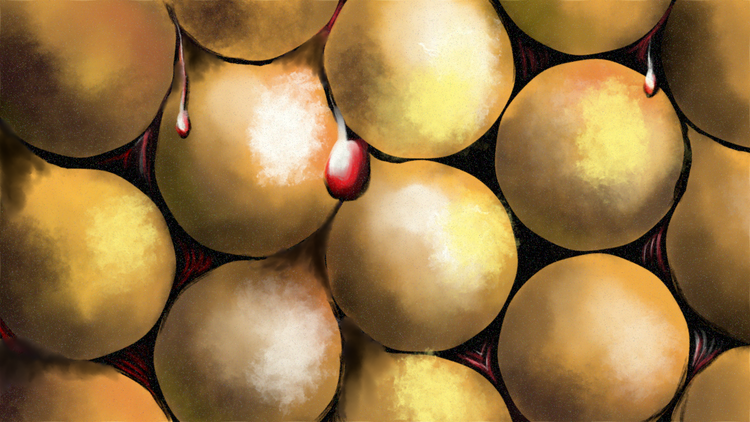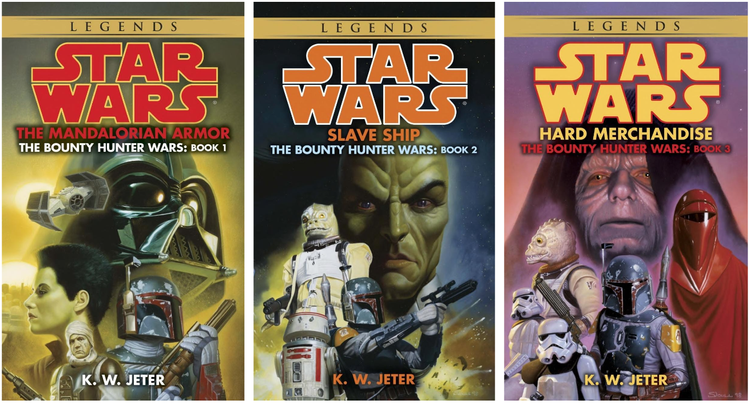
Running Commentary 2/27/2023
Hello,
This is the last RC for February. I've seen a red-winged blackbird outside my window, which means it's going to be spring soon. Still no grackles.
Anyway...
Watching...

BattleBots
- HYDRA v FREE SHIPPING - Hydra took a second win in a predictable but still hugely entertaining fight against Free Shipping. They managed twenty flips, eighteen of which would have gotten them a win by knockout if the match hadn't run out of time first. Free Shipping is, at the very least, a durable bot (when not facing Uppercut, that is).
- HUGE v FUSION - Fusion didn't even have time to catch on fire before Huge ripped it open. I really can't overstate how good Huge has been this season. With only a fight against Starchild left, an undefeated record heading into the tournament is theirs to lose.
- LOCK-JAW v GLITCH - It's worth remembering that Glitch had seven wins in a row before taking their first loss. It's not a bad bot, but it has not had a good season this time around. In this fight, its demise came in a very old-school way for such a new-school bot: inability to self-right. Typically, they count on using their weapon to flip, but that only works if their weapon is spinning already. Lock-Jaw did manage to catch its internals on fire as Glitch was being counted out.
- BETA v SHATTER - This was a battle between the sport's last remaining pure hammer bots, and I think it really came down to the forks Shatter added to try to keep Beta at arm's length. In the fight, they mostly served to keep Shatter from being able to turn away from Beta. The British bot kept control for the entire fight.
- QUANTUM v BLACK DRAGON - Black Dragon's streak of avoiding knockouts continues, but they didn't win. This season has really shown the importance of driving skills, which has been the difference-maker for bots like Huge and Claw Viper. Black Dragon doesn't have a lot of driving skill on their team; granted, they hardly need to, running such a hard-hitting and durable bot. But it was really clear here that there's not a lot of strategy to Black Dragon's approach. Quantum took its hits like a champ and maintained control throughout the fight before getting its teeth stuck in another opponent.
- TERRORTOPS v SLAMMO - This was another exhibition fight with a rookie bot, and Terrortops certainly had the best debut of any new bot this season. I think it has the makings of a real contender, with some upgrades to armor.
- BLIP v TANTRUM - This is the fight everyone's been wanting to see since Aren Hill's old robot took the giant nut in the same year that his new robot became the most impressive rookie. This fight delivered a little less flipping action than I expected, as Hill drove Blip very strategically, focussing more on pinning Tantrum than on tossing it. Tantrum never really was able to get a good hit on Blip, and the wall slams and flips
and Hill's remote igniter he installed long ago for just such an occasioneventually took enough of a toll that Tantrum could barely move by the time the three minutes were up. Blip needed this win, and I'm glad they got it.

The Bad Batch
The Batch go get their ship back, and Omega finds a way to do some good along the way. Here are my notes:
- We see another after-effect of the Clone Wars: in the absence of the major corporate powers that bankrolled the Separatists, a lot of far-flung industrial sites have fallen into the hands of local private actors, and not all of them are interested in running a legitimate business. This is the sort of situation we've seen in Star Wars before, and certainly in real-life post-war societies as well, but I found it working well again here. Omega's recognition that the Galaxy is full of Mekkos gives me hope that our heroes might find some purpose in their lives besides treasure hunting.
- I'm not adding him to the List, since he's not really a household name, but some viewers might recognize the voice of Benni Baro, Yuri Lowenthal, as also being the star of Ben 10, and as the voice of Spider-Man in most of that character's recent video game appearances.
- So I remain probably too confused regarding the status of the Separatist-aligned corporate interests. We saw in the last pair of episodes that the Banking Clan and the Commerce Guild still exist, with representation in the Senate, but here we see that the Techno Union has been dissolved and some of its assets left abandoned. It's all coming from bits and asides, and I sort of wish something would set the story straight.
- Overall, these two episodes were okay. They had some interesting moments, and they might be leading somewhere interesting, but they weren't anything great just by themselves
Playing...
Warframe
The latest update has brought the 52nd warframe, Citrine. I have not yet played Citrine, but, at time of writing, I've just completed farming her in the new "mirror defense" mission. The new mission is...good, but I'm not sure how much more I'll be playing it. Besides Citrine, the new node is the farming spot for two weapons and some arcanes, but not much else. It's a fun mission to play; the Mars defense and the old Corpus ship defense, which form the two halves of the map, are some of the best tilesets for defense in the game, switching between the two keeps things fresh, and collecting the crystal fragments makes good use of Warframe's signature parkour movement, something that tends to get ignored in most defense missions. But, once a player has Citrine, there's little pressing them to keep playing the mission. I do worry that open squads will dry up eventually.
I'll have my thoughts on Citrine next week. Until then, here's a playthrough of the new mission:

Bird of the Week
I've often said that the New World got the better warblers, while the Old World got the better flycatchers. The wood warblers are a rainbow of color, while the sylviids are a drab gradient. But, while the tyrant flycatchers are near-uniformly gray, the true flycatchers come in a wide variety of plumages. Granted, that diversity has a caveat: the flycatchers aren't that closely related. Back in 1910, the German ornithologist Ernst Hartert found that the only thing differentiating the flycatchers, the sylviid warblers, and the thrushes was the tradition of classifying them differently. This led to one of the first major revisions in bird classification, that largely destroyed the Old World warbler family and saw the thrushes and flycatchers shuffled considerably.
In a recent Bird of the Week, I mentioned, in passing, the ornithologist Charles G. Sibley. I'm going to mention him again now, as he conducted genetic testing on Old World flycatchers showing that the sub-groups within the family were not especially closely related, which led most ornithological councils to classify the thrushes into their own family. Sibley was the author, along with Jon E. Ahlquist, of a 1990 book arguing that all birds should be reclassified based on genetic testing, without concern for traditional groupings based on morphological similarities. From a later essay on the same subject:
Previous classifications were based on morphological characters in which categorical levels were subjectively defined by the human eye. The classification of birds most widely used today is that of Alexander Wetmore who based it mainly on the work of Hans Gadow (1893). Wetmore published the first edition in 1930 and the latest of five in 1960. There were few changes during the intervening years and the classification remains essentially that of Gadow, developed from comparisons of 40 characters a century ago. Such classifications provide a taxonomy and usually associate closely-related species, but seldom reflect phylogeny. They are also prone to errors due to interpreting convergent morphological similarities as evidence of close relationship...Classifications based on comparisons of DNAs reflect phylogeny because genomes evolve in a reasonably "clocklike" manner, i.e., the degrees of difference among the DNAs of different species are correlated with time, although the correlation is not perfect. Thus, the most objective and quantitative methods for the reconstruction of phylogeny are those that measure degrees of similarity between the DNAs of different species.
Ultramarine flycatchers are found in the forests on the southern slopes of the Himalayas, descending into central India during the winter. They feed on small insects, though the particulars of their diet and eating habits are not currently well-understood. They are currently classified within the sub-division of the flycatcher family known as the chats. It shares a namesake with BotW alum the lazuli bunting, as "ultramarine" (from the Latin for "overseas") was the term given to lapis lazuli-derived pigments imported from Central Asia by boat to Europe, where it was used to make the finest blue paints. To science, the birds are Ficedula superciliaris. The species name, like that of the white-browed woodswallow, refers to the white eyebrow sported by eastern males. The genus name, which was first applied to the European pied flycatcher, references a classical account of a fig-eating bird that became a blackcap in the winter; before birds' seasonal migrations were understood, some natural philosophers believed that some sorts of birds morphed into other sorts of birds. The idea perhaps seems silly to modern people, but, remember, some birds do change their appearance significantly between the breeding and non-breeding seasons, so the ancients were half-right.
Curation Links
Lost in the Stock | Noah Galuten, Eater
What’s the principal ingredient in packaged chicken stock? Read the side of the label, and, usually, you’ll find that it’s “chicken stock”. How can this be? What’s actually in it? And just what, legally, do food manufacturers have to tell us about what goes into what we eat?
Why does it take so long to mend an escalator? | Peter Campbell, The London Review of Books
The London “Tube”, the original metro subway system, is accessed from the city above by escalators, of which about 5% are broken down at any given time. An out-of-service escalator is an inconvenience, moreso when it cuts off access to public transport as opposed to, say, the upper floor of a department store, so getting them up and running again is important. Why, then, does it seem to take so long? The principles of the answer can be applied to other forms of infrastructure, which also seem to be always broken and under repair.
The Art of the Shadow | Roberto Casati & Patrick Cavanagh, The MIT Press Reader
“Painters have long struggled with the difficulties of depicting shadows, so much so that shadows — after a brief, spectacular showcase in ancient Roman paintings and mosaics — are almost absent from pictorial art up to the Renaissance and then are hardly present outside traditional Western art…Because we do not notice them, transgressions of physics reveal that our visual brain uses a simpler, reduced physics to understand the world.”
Night Journey of the Dragon-Horse | Xia Jia, trans. Ken Liu, Lightspeed Magazine
[FICTION] “Next to the shore is his birthplace, the tiny, tranquil isle of Nantes. The mechanical beasts have been slumbering for an unknown number of years: the twenty-five-meter tall carousel horse of the ocean world; the fifty-ton giant elephant; the immense, frightening reptile; the heron with the eight-meter wingspan capable of carrying a man; the bizarre mechanical ants, cicadas, and carnivorous plants . . .”
See the full archive of curations on Notion






Member Commentary